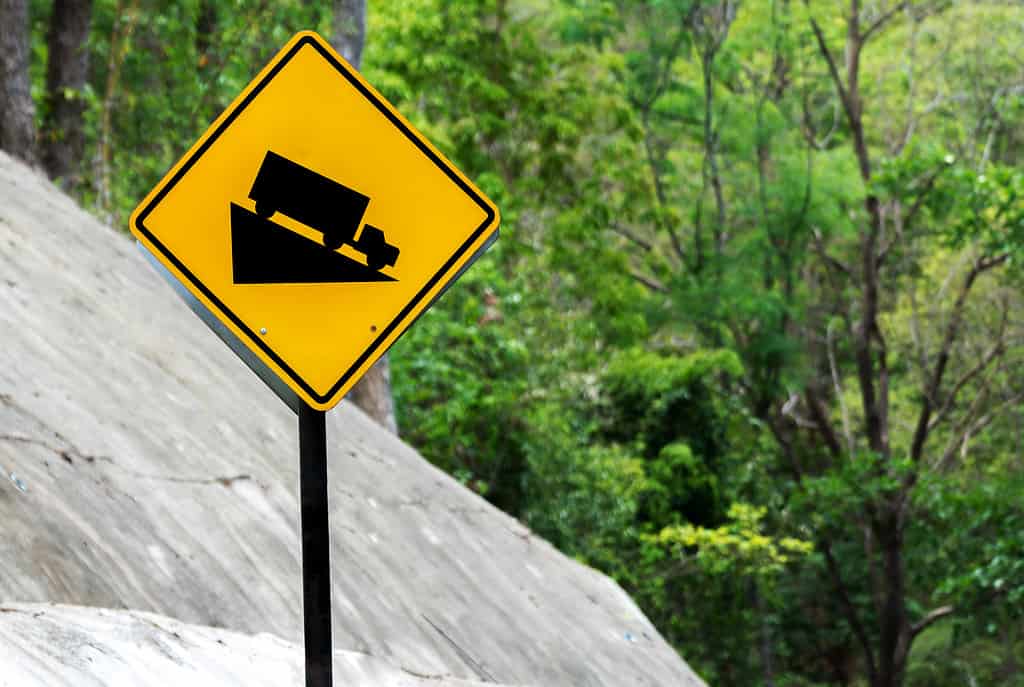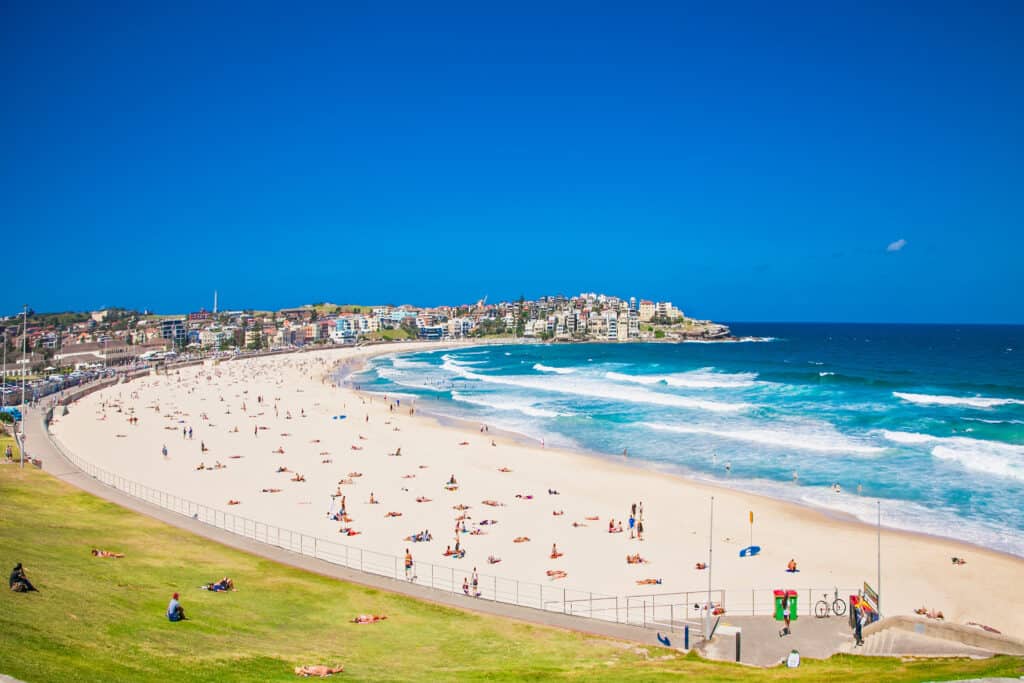Living on an exceptionally steep road can be challenging. Residents may enjoy stunning panoramas and being perched high above their surroundings. However, daily life can be physically taxing, as steep streets make walking, biking, and driving more difficult. Residents must take extra precautions during inclement weather, such as snow or heavy rain. Despite the challenges, the distinct character of such streets can create a strong sense of community among neighbors. A 30.5 percent grade over its length makes Ahearn Avenue in Coogeethe steepest street in New South Wales. Continue reading to discover more about the steepest highway in New South Wales.

Despite the challenges, the distinct character of steep streets can create a strong sense of community.
©manop/Shutterstock.com
New South Wales
New South Wales (NSW) is one of the six states and two territories comprising the Commonwealth of Australia. It is the most populous state in the country. NSW is located in the Southeastern part of Australia. Sydney, Australia’s largest and most iconic city, is New South Wales’s capital. Sydney is known for its stunning harbor, the Sydney Opera House, and the Sydney Harbour Bridge. NSW is a world-class tourist destination. Besides Sydney, the state offers a wide range of attractions. NSW is home to national parks and wilderness areas. The Blue Mountains, Kosciuszko National Park, and Royal National Park showcase the state’s natural beauty. The region boasts a rich cultural scene with world-class museums, theaters, galleries, and music venues. Sydney’s cultural institutions, such as the Art Gallery of New South Wales and the Australian Museum, attract visitors from around the world.
Coogee, New South Wales
Coogee is a coastal neighborhood located in the Eastern suburbs of Sydney. It is known for its laidback beach vibe. Whether you’re looking to enjoy a day at the beach, take a scenic coastal walk, or dine at one of its many restaurants, Coogee’s got you covered. It is known for its amazing beaches and proximity to Sydney’s city center. Coogee Beach is one of the suburb’s main attractions. It offers a wide, crescent-shaped sandy shore, making it a popular spot for swimming, sunbathing, and water sports. Coogee is part of the famous Bondi to Coogee Coastal Walk, a scenic coastal trail that stretches for 3.7 miles (6 km). The walk offers stunning ocean views. Coogee has a lively dining scene with various restaurants, cafes, and bars.

Coogee is part of the famous Bondi to Coogee Coastal Walk, a scenic coastal trail of 3.7 miles.
©iStock.com/master2
The Coogee Pavilion, aka The Pav, is a beachfront building that houses a multi-level venue with restaurants, bars, and a rooftop terrace, providing spectacular ocean views. Coogee’s proximity to Sydney’s city center [approximately 5 miles (8 km)] makes it easily accessible. Coogee is a predominantly residential area. It’s popular for both families and young professionals due to its relaxed beachside lifestyle and the convenience of nearby amenities.
At-A-Glance
While Ahearn Avenue is the steepest road in New South Wales, it has its share of competition. So, how does Ahearn Avenue stack up?
| Road/Location | Grade % / Angle° |
|---|---|
| Baldwin Street, Dunedin, New Zealand (Officially the steepest road on the planet): | 35% / 19° |
| Ahearn Avenue, Coogee, NWS, Australia: | 30.5% / 17° |
| Waiwaera Avenue, North Manly, NWS, Australia: | 29% / 16.2° |
| Tarrants Avenue, West Denistone, NWS, Australia: | 26% / 14.74° |
| Attunga Street, Double Bay, NWS, Austalia: | 22.6% / 12.75° |
| Carrington Road, Coogee, NWS, Austalia: | 22% / 12.45° |
| Alexander Street, Collaroy, NWS, Austalia: | 21.7% / 12° |
| Wanganui Road Kirrawee, NWS, Austalia: | 20.7% / 11.75° |
| Alexander Street, near Oberon, NWS, Austalia: | 20.4% / 11.6° |
Making the Grade
Road grades, also known as road gradients or slopes, are measures of the incline or decline of a road or a section of a road. Typically expressed as a percentage or in degrees, grades describe how steep or gentle a section of road is. Percentage grade is the most common way to express road slope.
It represents the rise (elevation gain) or fall (elevation loss) over a horizontal distance, expressed as a percentage. The method for determining this is dividing the vertical rise into the horizontal run and multiplying by 100. For example, a road with a 5% grade means that for every 100 feet/meters of horizontal distance, the road rises 5 feet/meters in elevation. Road grades can also be expressed in degrees. These measurements correlate to the degrees (angles) in a 360° circle. One degree is equivalent to approximately 1.75% grade.
Categorically Speaking
It’s essential that drivers, especially those driving in mountainous or hilly areas, know the road grades they will encounter. Road signs indicate the grade and prepare drivers for what to expect. Steep ascents and descents require drivers, especially those piloting larger trucks or RVs, to use driving techniques that keep their vehicles in working order.
- Completely flat roads would have a grade of 0% or 0°. These roads are easily passable for all vehicles.
- Low Grades, <2% or <1°, represent relatively flat or gently sloping terrain.
- Moderate Grades of 2% to 5% (1° to 3°) are common on many roads. These roads are generally manageable for most vehicles without difficulty.
- A steep grade is 5% to 6% (3° to 3.3°). Ascending such grades is difficult for heavier vehicles, which may fail to maintain a reasonable speed. Descending creates a different issue. Those driving heavy vehicles must be adept at downshifting and pumping the breaks, lest they fail.
- Grades of 7% to 10% (4° to 5.7°) are steep. Heavy machinery would find such grades daunting.
- Any grade over 10% or 5.7° is considered extremely steep. Even lightweight vehicles are hard-pressed to maneuver roads with grades above 10%.
A 30.5% grade has a 17° angle of rise or fall. The lovely folks living on Ahearn Avenue must contend with and navigate this daily. Depending on the residents’ age, they are either hardy and up to the challenge or planning to move as the hill has become a struggle.
Thank you for reading! Have some feedback for us? Contact the AZ Animals editorial team.








